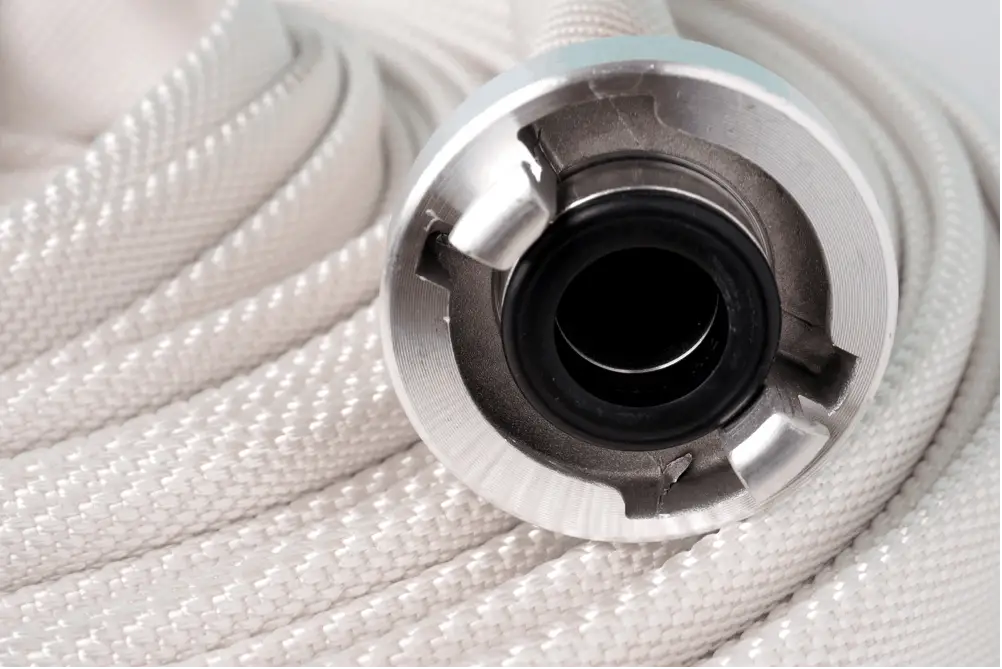Camping in your RV during the winter season is a fun and exciting experience. But, this comes with a lot of challenges like keeping your RV water pipes and water hose from freezing for uninterrupted water supply. So, you must be wondering, how to keep the RV water hose from freezing?
You can prevent your RV water hose from freezing by attaching a heat cable with it, or putting an insulated skirt around the RV’s water lines and hose to prevent it from freezing. You can also try disconnecting the hose once you are done using it and store it inside your RV.
In this article, I have discussed not only the ways that you can use to prevent your RV water hose from freezing but also how you can unfreeze it if it does become frozen.
3 Simple Ways to Prevent Your RV Water Hose from Freezing
Most of the RVs are not equipped enough to handle the cold environment. This could lead to problems like a frozen water hose. But some preemptive measures can protect your water hose from being frozen. Some of these preventive measures are given below:
1. Store Your Water Hose Inside Your RV While Not in Use
This is the first thing that you can do to prevent your water hose from freezing in a cold climate. Just disconnect your hose while it is not in use and store it inside your motorhome.
That means when you are done with filling your RV’s water tank, remove the hose, get rid of all the water inside the hose, and store it inside your motorhome. As a result, it will not freeze at all.
While this method is simple and doesn’t cost you anything, it might be a hassle for some people as they will need to continuously get the hose out of the RV, attach it with the water supply and your RV’s water tank and disconnect it once you are done. But considering it doesn’t cost you anything, this preventive method might be worth the effort.
2. Use a Heated Water Hose
You can use heated water hoses to prevent it from freezing. You can buy it online or from your local hardware stores. There are lots of heated water hose models available in the market.
Cheap ones are made using lower-quality materials, while expensive ones are made of top-quality materials. As a result, expensive heated water hoses are much more durable and have a greater lifespan.
But if you want to save some money and at the same time have a good quality heated water hose, you can also make it yourself. To do that, first, find out the length of your RV water hose. Lay the hose flat on the ground and find out the length with a measuring tape. You can also find the length on its packaging box.
Now attach a heating cable parallelly with the hose using electrical tape. You can find these heating cables in camping stores and they don’t cost much. Tape the cable in such a way that it touches the hose. Also, you mustn’t coil the heating cable around the water hose. If you do this, the cable will generate too much heat which can eventually damage the hose.
Once you have taped the heating cable properly, you need to insulate the hose to prevent heat from escaping. Use foam tubes to insulate the hose. You can get these tubes from any hardware store.
Usually, you can pull the sides of these tubes open. Insert the hose inside the foam tube. Tape the opening of the foam tube so that the hose isn’t exposed to the outside environment.
For some extra insulation, can use pipe insulation tapes over the foam tubes. You can also get them from your local hardware store. If you can find any insulation tapes, you can use aluminum foils as an alternative.
Now that you have made your DIY heated water hose all that is required is to connect the heating cable to your RV’s power supply. It is recommended that you use a heated hose only when the temperature of the caping site is zero degrees Celsius or less. Also, unplug the cable when you do not need to use it.
3. Use an Insulated Skirt
The third best method that you can use to prevent your RV water hose from freezing is by putting a skirt around your RV’s water valves, pipelines, and hoses. Make sure that you have installed the skirt appropriately so that there is no gap present to reduce heat from escaping.
Also, you can cover the skirt with some insulating material. Foam is great for this purpose. It has good thermal insulation properties. On top of that, it is cheap and you can get them in any local hardware store.
But just installing a skirt around the perimeter of your RV doesn’t guarantee that your water hose and pipeline will not freeze. They can still become frozen if the camping site’s climate is too cold. In this case, you can install a space heater or a heat lamp inside the skirt.
Just plug in the heat lamp into your RV’s power supply. This will allow you to keep your water pipelines and hose warm in any environment. But make sure that the heater is unplugged when the climate is warm or you are not using it. When you are RVing, you have access to limited resources. And by doing so you are preventing the waste of valuable energy.
How to Unfreeze your RV Water Hose?
Sometimes winter climates can be so harsh that no matter what you do, your RV water hose will get frozen. In that case, you will need to unfreeze it. To do that, start by thawing the hose. You can use a heat gun to do that. If a heat gun is not available, you can use a hairdryer also.
Start by defrosting the ends of the hose. Use the heat gun for five to ten minutes to heat the connection of the hose. Move the heat gun around the hose to heat the ice uniformly. Using a hairdryer instead of a heat gun will require more than ten minutes to melt the ice.
Once the ice in the joints is melted, disconnect the hose from the RV’s water tank. Do not twist or bend it too much. Otherwise, you can damage it. Once you have disconnected all the ports, take the hose inside your RV. They put it near your RV’s heater to warm it up. Keep the ends facing upwards. Otherwise, the water from the melted ice will spill inside your RV.
When all the ice is melted, empty the hose in your RV’s shower. The water will exit the RV through the drain. Once all the water exits, check the hose for any sort of damage.
When water is turned into ice, it increases in volume. So, as your hose freezes, there is a chance the ice formation will crack its walls. Also, handle it carefully while unfreezing it. And, always keep a spare hose inside your RV.
Conclusion
By now, I hope that you have found your answer to the question “How to keep RV water hose from freezing?” As you can see just by taking a few simple steps you can ensure flowing water into your RV even in the cold. And if it does get frozen then you can just follow my guide on how to unfreeze it.


